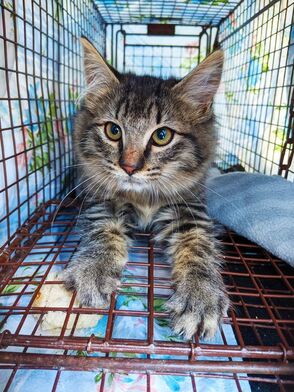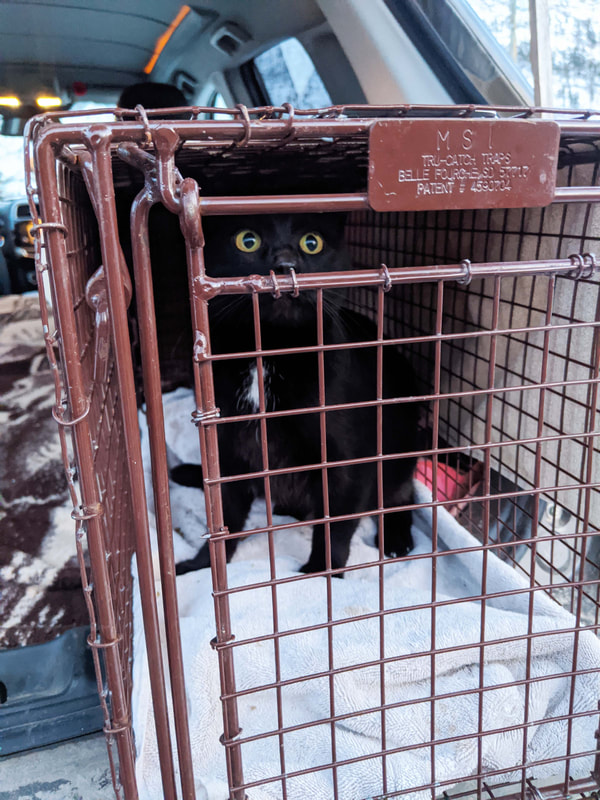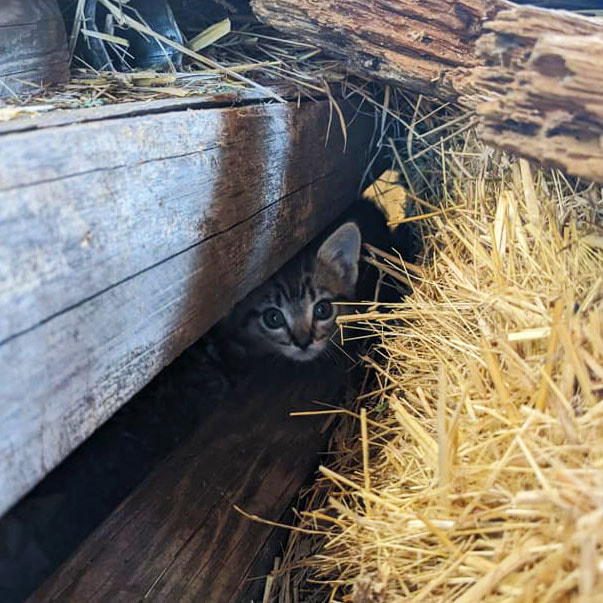NO CAT LEFT BEHIND
|
Trap, Neuter, Rehabilitate & Rehome.
Cat colonies are in every city or town whether you see them or not. Some of these cats are feral, born in the colony without ever experiencing human interaction. Some are strays, possibly lost or abandoned. Most cats in these colonies suffer from malnutrition or starvation, extreme temperatures, injury, and disease; a less than comfortable life. There are many ongoing debates about how to solve this issue.
Trap, neuter, and return efforts benefit the colonies by preventing the birth of new litters and helping to reduce disease covered in core vaccines. If maintained properly, the colony should not increase in numbers, but gradually naturally decrease. This is a humane solution as long as there is a colony guardian who provides food, adequate shelter, and continued veterinary care to the colony. However, what if there isn't a willing guardian to care of the cats? What if the cats cannot be returned to the area because it is not safe? Do you leave them to suffer? Moving a colony cat to another outside location is a very long process that requires much dedication to ensure the cat's survival. The cat must be kenneled, preferably in some type of barn or building for an extended period of time. They are fed and cared for with the hope they will accept this location as home and not flee forever when they are released.
Most cat shelters are not equipped to care for feral colony cats. In fact, a cat's "feralness" cannot adequately be assessed during a short stay in a shelter as the environment is just too stressful. An extended stay for socialization is usually unsuccessful as there tends to be too much noise and not enough staff or volunteers who are able to socialize them. Feral cats brought to shelters are usually euthanized.
So, another option is trap, neuter, rehabilitate, and rehome. That is our goal at Sammy's Forgotten Felines. We place these cats in a quiet, calm foster home, where in many cases, they will accept a new indoor house cat life. If we meet a cat who finds socialization too much to cope with, we do our best to find a sanctuary home. Maybe one day Sammy's Forgotten Felines will have a sanctuary! Our vision is to give each cat the chance for the best possible life.
Trap, neuter, and return efforts benefit the colonies by preventing the birth of new litters and helping to reduce disease covered in core vaccines. If maintained properly, the colony should not increase in numbers, but gradually naturally decrease. This is a humane solution as long as there is a colony guardian who provides food, adequate shelter, and continued veterinary care to the colony. However, what if there isn't a willing guardian to care of the cats? What if the cats cannot be returned to the area because it is not safe? Do you leave them to suffer? Moving a colony cat to another outside location is a very long process that requires much dedication to ensure the cat's survival. The cat must be kenneled, preferably in some type of barn or building for an extended period of time. They are fed and cared for with the hope they will accept this location as home and not flee forever when they are released.
Most cat shelters are not equipped to care for feral colony cats. In fact, a cat's "feralness" cannot adequately be assessed during a short stay in a shelter as the environment is just too stressful. An extended stay for socialization is usually unsuccessful as there tends to be too much noise and not enough staff or volunteers who are able to socialize them. Feral cats brought to shelters are usually euthanized.
So, another option is trap, neuter, rehabilitate, and rehome. That is our goal at Sammy's Forgotten Felines. We place these cats in a quiet, calm foster home, where in many cases, they will accept a new indoor house cat life. If we meet a cat who finds socialization too much to cope with, we do our best to find a sanctuary home. Maybe one day Sammy's Forgotten Felines will have a sanctuary! Our vision is to give each cat the chance for the best possible life.
Barloc's StoryBarloc lived in a community cat colony in the city. He was TNR'd and returned to the colony probably without time or a quiet space available to assess his "feralness". Years later, Barloc was trapped and brought in for veterinary care. The years of living on the street had taken its toll and he had cauliflower ears (one ear basically completely missing) and bilateral entropion - a painful condition where the eyelid curls inward and the eyelashes scratch the eyeball with every blink. We fostered Barloc the second time he was trapped and learned very quickly that he was not in fact, feral. He was a sweet, big man cat that loved attention. He had surgery to fix his eyelids and was transferred to the lower mainland where he was adopted as a house cat. His struggle as a street cat was completely unnecessary.
|













